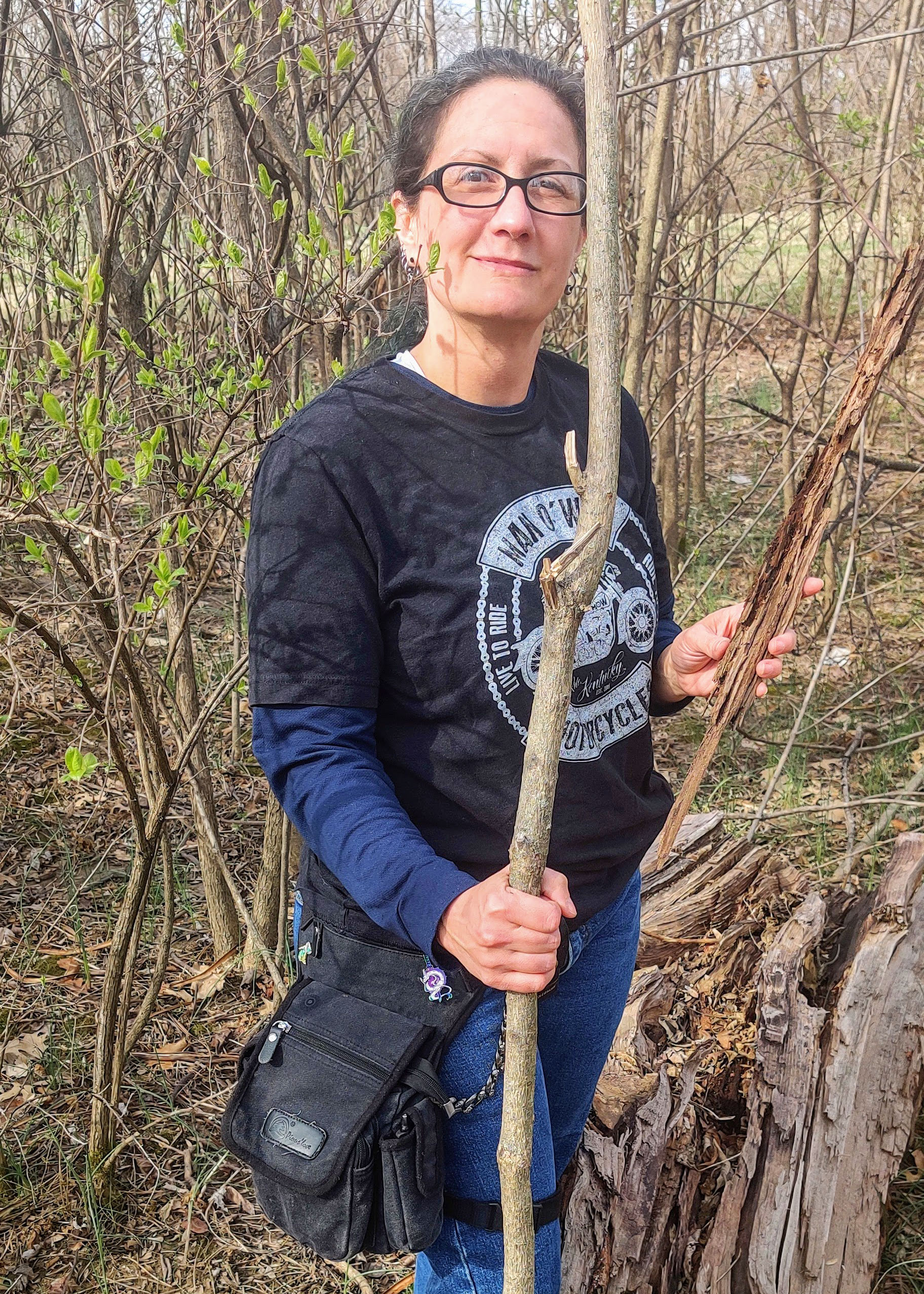Blog
B's Creative Life

A story by Brandy Blaylock. This article is also featured in the April 7, 2023, issue of The Ripple.
Click here to learn more and subscribe to this monthly e-newsletter!
It all started with the bees; learning about their decline changed the way I gardened.
Having grown up in the west, where recycling is preached throughout school life, conserving water is a necessity, and people have pet desert tortoises from the 70s, I was raised with a strong urge to protect the planet. I was also raised during a time when most children were told to play outside until the streetlights came on; my ten-speed and I knew every local desert trail and wash entrance. There wasn’t much nature that I was unfamiliar with or feared, especially since my family also camped a lot.
These young experiences shaped my love for nature, while later, military life taught me the value of the phrase “it takes a village.” When you’re in new lands, starting a new life, and your spouse is deployed, you need people to aid you in acclimating and growing in your new home; one day it will be you who welcomes the new families. This sense of shared duty has played out in the decades I’ve spent volunteering in schools and in my drive to be a better steward of our earth.
“The children won’t know if their parents don’t pass down their knowledge.” - A quote from a random forum that I read online 10+ years ago.
Today, my volunteering continues at two elementary schools in the Princeton City School District, where students know me as the “Garden Lady” or Ms. Brandy from their time as one of “B’s Junior Gardeners.” This program services approximately 150 students a year, teaching them how to live with nature, explore it, grow it, and even eat some of it. Children love eating what they grow, and by focusing on food security in small gardening spaces alongside our native pollinator gardens, I hope to encourage families to protect nature when growing their own food.
To keep this program self-sufficient through the years, I’ve learned many ways to save on costs. Upcycling or recycling materials not only keeps costs down but keeps many things from landfills until they truly are no longer useful, and by propagating everything from seeds to bulbs and cuttings, this garden program has a continuous wellspring of plants and seeds to draw from. This propagation effort has further enabled me to share native plants or seeds with many people in my community or online, who share a similar ecosystem.
It has been shared knowledge that has guided me to be who I am, and it is the sharing of this knowledge that drives me forward. With hopes the ripple will spread from those who hear, I share this information by plant or seed, by photo or media, by instruction or article.
I heard what the bees were saying, now I pass it on to you.
Want to participate in a community garden program or maybe start your own?
For me, it was joining my local city’s garden club and volunteering with one of their active projects at the time that provided me with the foundation for my current project. Most communities list their civic organizations that offer volunteer opportunities on their city website pages and are great places to get your feet wet in bettering the community you live in.
If a civic organization doesn’t have what you’re looking for, pitch the idea to any of the beautification or scouting organizations, or directly to the principal of the school, director of the church, or owner of the community complex. Detail your project in a proposal, what materials are needed, how much will it cost to build and maintain, who’s responsible for maintenance, and what purpose the project serves to the community, and align it with any certification projects you can locate online. The American Heart Association, Audubon Society, Xerces, Homegrown National Park, National Wildlife Federation, etc. offer various Community Initiatives that would look great on a placard in your project space and on a city’s website to entice new residents.
If you’re going it alone, without an organization’s backing, use your networking skills for funding and volunteers. Surround yourself with like-minded community members and reach out to your local county extension office to locate volunteers needing service hours for various certifications, or see if local high school and college students need service hours for resumes. Aligning your project to a beneficial practice or societal benefit will help with locating grants or donors to fund your project.
Lastly, communicate! Tell everyone what you’re doing. Shout it from every social media platform, speak it to everyone you meet, write it to every newsletter, and share it with your friends and neighbors. If no one knows, they will not come, no matter what you build.
It starts with an idea and is realized with a plan.
Volunteer with B’s Junior Gardeners!
To join my active school garden-based science enrichment program, email Brandy Blaylock at bsjrg@gmail.com. Remote volunteer opportunities are available if you are not able to volunteer locally in Springdale, Ohio.
Click here to visit our website and follow us on Twitter @BsJrGs